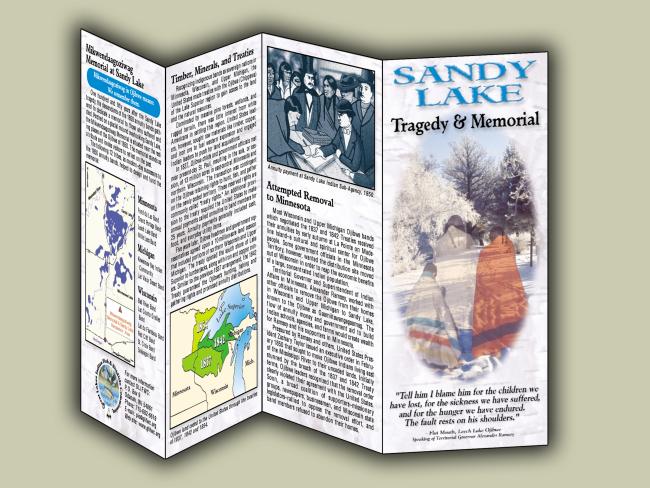President Taylor's 1850 removal order had failed. Nevertheless, Ramsey and Indian Sub-agent John Watrous had a scheme to lure these Ojibwe into Minnesota and trap them there over the winter. They informed band members that the treaty annuity distribution site had changed from La Pointe to Sandy Lake, some 285 canoe miles to the west. If the Ojibwe hoped to receive anything that year, they were instructed to be at Sandy Lake by October 25, 1850.
While band members from Michigan and some eastern reaches of Wisconsin refused to travel with winter fast approaching, more than 5,500 Ojibwe journeyed to Sandy Lake that autumn. They arrived fatigued and hungry after the arduous journey, only to find no one there to distribute the supplies. Wild game was scarce, fishing was poor, and high water had wiped out the local wild rice crop for the second consecutive year. For the weary travelers and those Ojibwe who resided at Sandy Lake, living conditions deteriorated rapidly.
Over a six-week period as harsh winter conditions set in, band members waited near the newly established Indian sub–agency. Without adequate food or shelter, disease and exposure ravaged Ojibwe families. More than 150 died at Sandy Lake from complications caused by dysentery and the measles.
A partial annuity payment was finally completed on December 2, providing the Ojibwe with a meager three-day food supply and no cash to buy desperately needed provisions. The following day most of the Ojibwe broke camp, while a few people stayed behind to care for those too ill to travel. With the canoe routes frozen and over a foot of snow on the ground, families walked hundreds of miles to get back home. Another 250 died on that bitter trail, and the Ojibwe vowed never to abandon their villages in Wisconsin and Upper Michigan for Sandy Lake.
